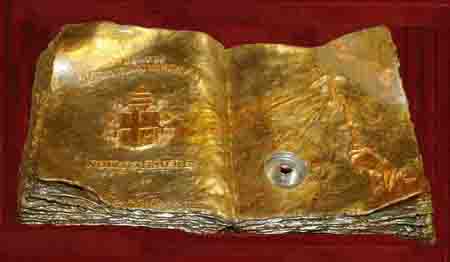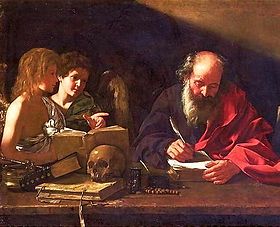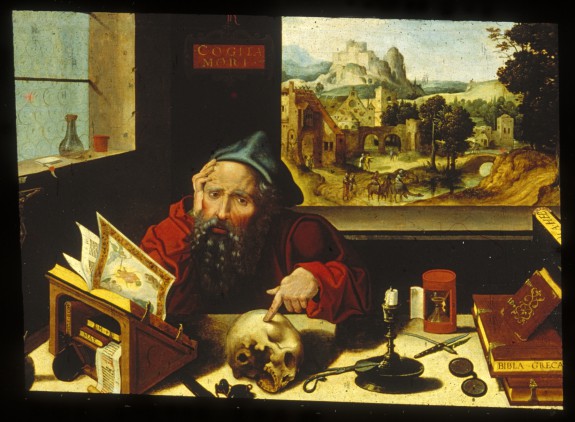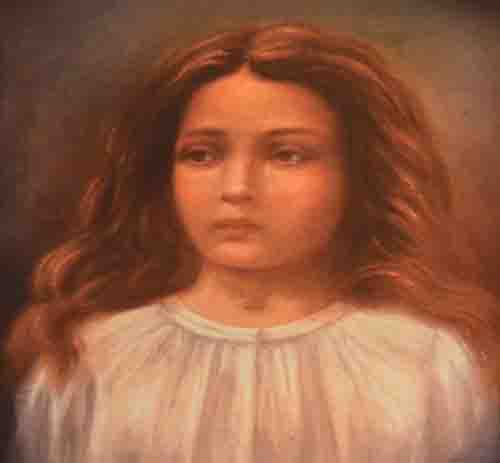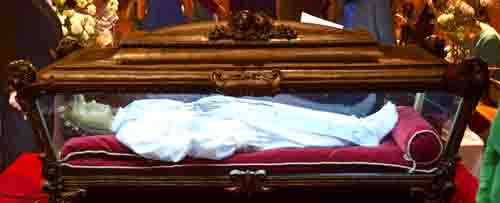Library
|
|
|
Relics What is
the Purpose of Relics?
What is the Purpose of Relics? Relics cannot cause miracles to happen. Not even Saints perform miracles. Only God can perform a miracle. And He chooses to do them in answer to the prayers of the Saints. See John 2:1-10. A Bible study on relics is a good way to see the manifest power of God and the value of sacramentals. On the one hand, there are Muslims who have an unholy zeal to destroy all statues and relics. Even some Protestants follow their example. While they begin with two important truths that God is the source of all that is good and only He is to be adored, they fail to see just how powerful God is. They create a false separation between God and His created world because they fail to see how He works through it. See links below on Islam. God works through relics to inspire us to holy faith. They remind us of the Saints whose example we are called to imitate. 1 Corinthians 11:1 God also give us grace through them. “God doesn’t need relics” is the response often heard from those who do not value them. But if we reject all that God does not need we would reject Matthew, Mark, Luke, and John. God is God. He does not NEED anything. He could have saved us in other ways if He wanted to. Jesus could have written the Bible Himself while on earth, or He could have handed it down directly from heaven to each of us. God blesses us with relics not because He needed
to do so, but because we need them. Devotion to the Saints leads
to a
greater response to God’s love when we do so voluntarily rather than out
of obligation.
A Biblical Case for Relics? John
9:1-7 If Jesus had desired He could have just instantly cured the man without the clay or water. However, we see Jesus choosing to work through physical things, not because He needed to, but apparently because we need for Him to do so.
Luke 8:43-47 2
Kings 13:21 Out of respect for the dead we usually would never dig up a grave. However, the Saint is now in heaven. And, out of an even greater respect for the dead, who is now alive in Christ in heaven, we consider it a privilege to have relic from that saint. Acts
19:11-12 God chooses to work miraculous deeds through the objects associated with the Saints.
Revelation 6:9-10 Above we see the Saints in heaven aware and concerned about what is happening here on earth in this life.
Revelation 8:3-4 The Saints in heaven intercede on our behalf.
James 5:16 And because of these truth above the Church has always
esteemed the value of having relics of the saints placed in our altars. Relics are Not Magic Magic vs. Sacramentals Are sacramentals such as holy relics like magic ? NO! They are the opposite of magic. In magic you have a supernatural object such as magic wand, lucky charm, or a genie in a magical lamp. They are used to bring about a change in the natural realm, e.g. to turn something into gold, etc. With sacramentals we have a natural object such as a holy relic, holy water, etc. and by faith in God and by His application of grace a change is brought about not in the natural realm, but in the supernatural realm. Through them God brings about a supernatural blessing that cannot be seen. See CCC 2117, 548, Revelation 9:21
Read more on
What’s Your Perspective ?
The Greatness of God See “Going Directly to God.” See “One Mediator”
|
|
|
|
|
||||
|
||||
|
